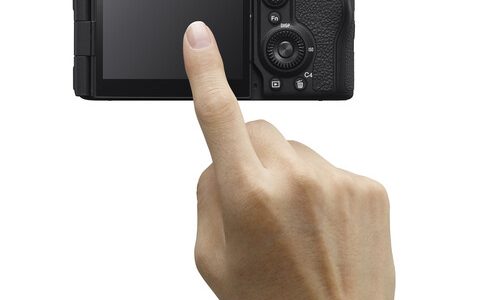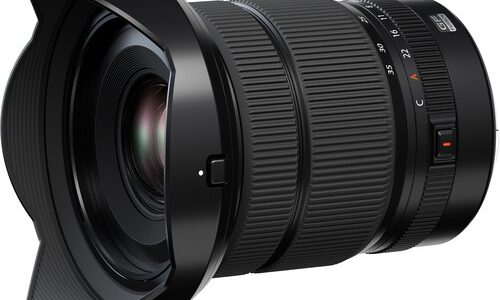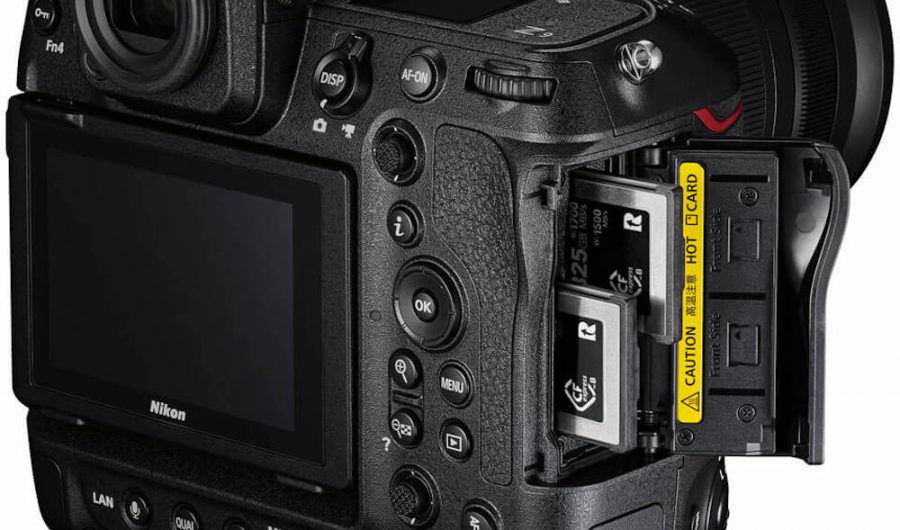

As of January 1 of this year, any $5000 mirrorless camera was either medium format or else a Leica. The only non-collectible cameras with sensors smaller than medium format in that rarefied price bracket were the two sports-focused DSLRs and a bunch of cinema cameras that would (reluctantly) take still images as well. Interchangeable lens digital cameras had started out in that price bracket (Nikon’s D1 was arguably the first semi mass-market DSLR – although Canon’s EOS-D30 and a couple of Kodaks can also be argued), and costs have gone down so much that a $5000 camera had become almost impossible to find, although the bottom end of the market has been swallowed by phones to such an extent that $500 cameras are also going extinct as everybody focuses on $1000-$3500 cameras. Well, the $5000+ camera is back, and it’s back with four models with three very different design goals (Sony’s A1 and Nikon’s Z9 have similar goals). As has long been true, the technology in these expensive cameras is worth watching even if you’d never spend that kind of money on a camera – it gives an idea of what we’ll see in mid-priced cameras in a few years.
As of Fall 2021, the big four all have flagships in the $5000-$6500 range, all are brand new, all are mirrorless, and only Fujifilm is medium format. You can have a 102 MP camera with 15+ stops of dynamic range and image quality that otherwise requires 8×10” film, or you can have a camera that shoots 30 fps and does 8K video. All four point the way to where photographic technology is going, and the four of them offer a differentiated experience – nobody is going to look at the Fujifilm GFX 100S and the Canon EOS-R3 as competitors for the same job. I own the GFX 100S , which is the best fit of the four for my photographic style, and I have handled the Nikon Z9, Sony A1 and Canon EOS-R3 briefly at the Hunts Photo and Video Show in early November. Neither the Z9 nor the EOS-R3 is actually shipping yet, and the firmware on either or both could easily have been beta. I haven’t had a card in any of them except my own GFX 100S, so I don’t know much about image quality, but I do have initial handling impressions of all of them.
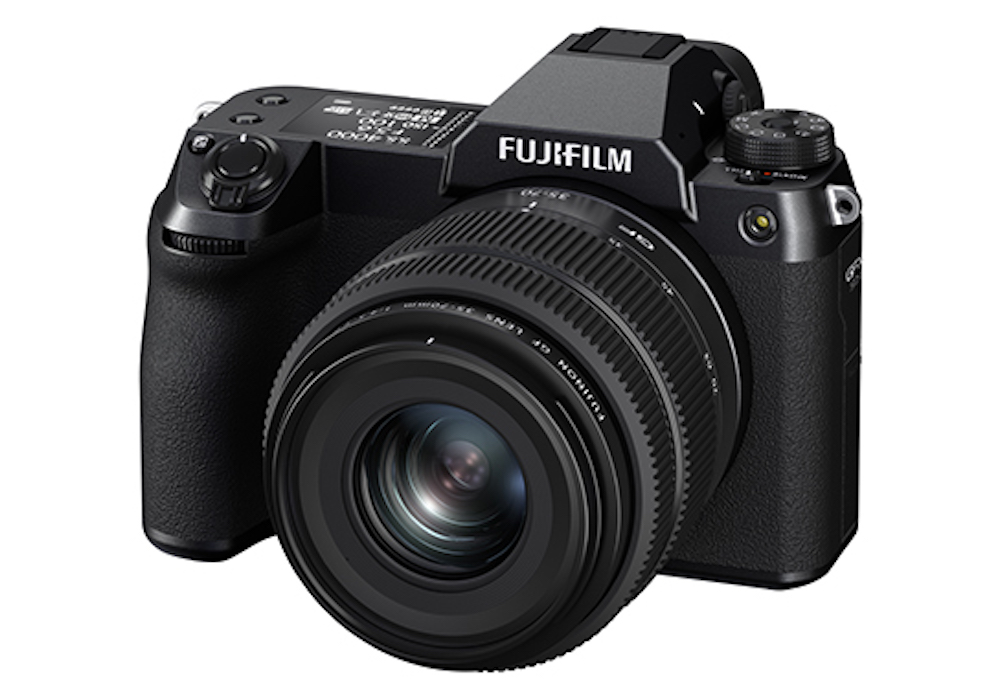
Fujifilm has chosen to focus exclusively on image quality (in a few modes, the GFX 100S is a single-shot camera with no continuous drive at all – you can press the shutter at up to about 1 fps). Even in its fastest mode, the big GFX only shoots 5 fps – but it’s shooting 102 MP images with the best noise, dynamic range and other image quality characteristics yet achieved in a one-piece camera. It has decent AF speed, but nothing better than any midrange camera – this is not a camera built for speed. With 6,638 shots and several hundred prints on the GFX 100S, I am still as impressed with the statement image quality as when I wrote about in A Slew of Similar Sony Sensors in the spring. I simply haven’t seen digital files as good as these, between the resolution, dynamic range, color science and lens quality (much of my experience is with my own 32-64mm, and I’ve borrowed the 23mm and 120mm from Fujifilm). I recently had the opportunity to look at original Ansel Adams prints (16×20” prints from 8×10” negatives) up close, and the resolution of GFX prints is clearly on the same level. It has that nearly infinite detail of a good large-format print, which I haven’t seen another digital camera that can achieve. A few of the extremely high-end Phase One backs claim even higher image quality than Fujifilm has reached – specifically the 100 MP Trichromatic and the 150 MP variants – but I have never seen one in person or had a close look at output. My very limited experience with Phase gear is that its practicality in the field is nothing like the delightfully handling GFX.
Canon has gone in exactly the opposite direction from Fujifilm – the maximum resolution of the EOS-R3 is only 24 MP, and it makes no spectacular claims about image quality – it’s reputed to be very good, but any modern full-frame camera is very good. The image quality shouldn’t be very different from a basic $1000-$2000 camera (the one I played with didn’t have a card in it, and they didn’t have prints). Where it’s different is in its incredible speed. It’ll get the shot when nothing else will. Unlike anything else on the market, the R3 can actually shoot 30 fps in STILL mode (with a 150 frame buffer), with full autofocus, no restrictions on file format and without interfering with the viewfinder. Its refresh rate is fast enough to leave it in electronic shutter mode most of the time, with very little rolling shutter (it’s a 12 fps camera with the mechanical shutter engaged, which is about as fast as any mechanical shutter will go without chewing itself up). Amazingly, it will sync with flash at up to 1/180 second with electronic shutter – at 15 fps (if you can find a flash that cycles that fast!!!). One seemingly minor but critical feature related to flash is that the intelligent hot shoe (a million tiny contacts to support microphones and such as well as flash) is weather sealed whether or not there’s a flash attached. The similar shoe on Sony bodies is a real weakness – I’ve taken to taping the cover down on it after rain got in there and caused all sorts of weird, but temporary errors (WITH the shoe cover in place), so Canon’s weatherproofing that connector is very welcome!
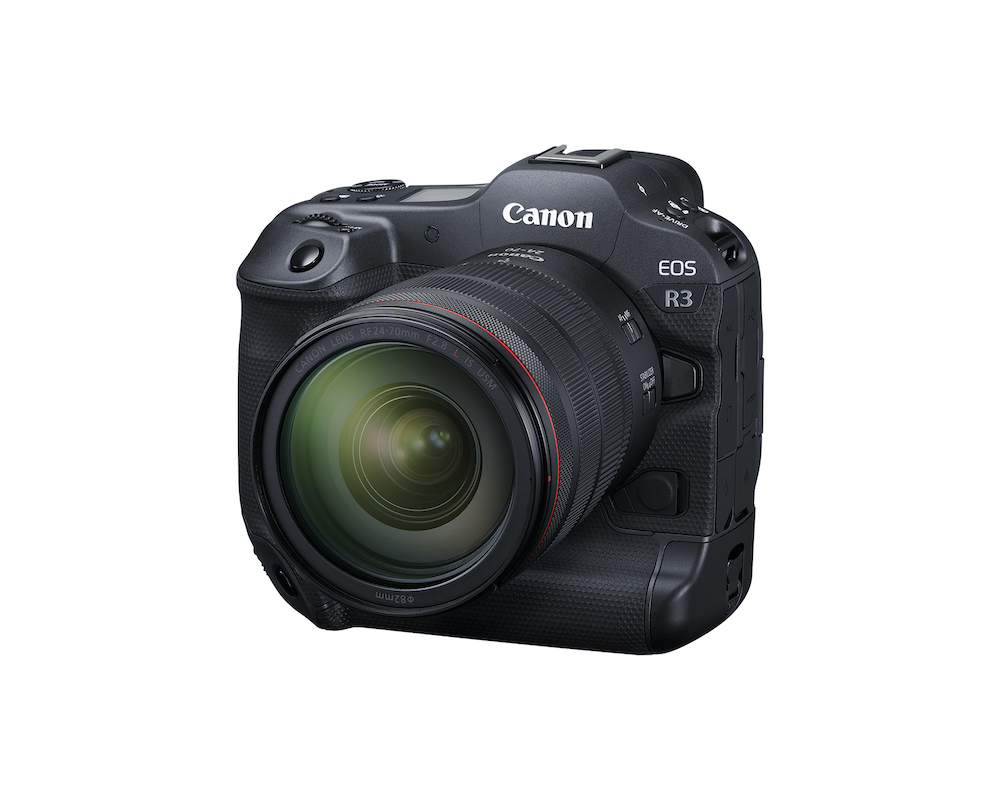
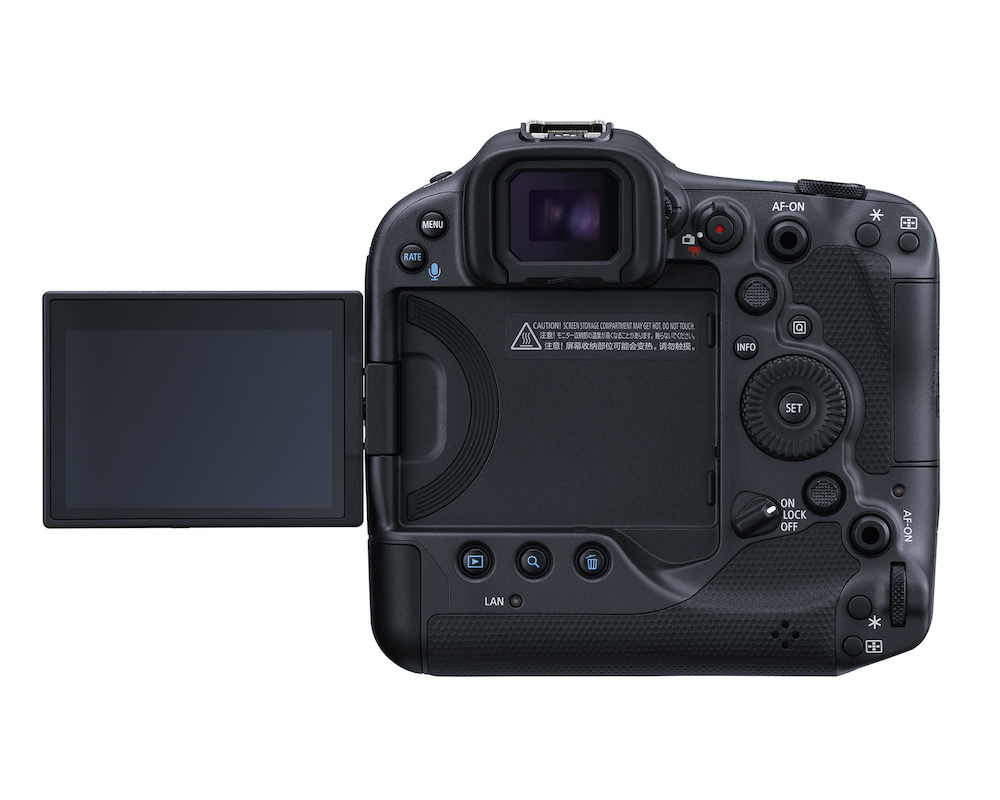
It ALSO shoots 6K60p RAW video. Video support is somewhere between “extensive” and “unbelievable” – no 8K (which the 24MP sensor couldn’t support) and perhaps surprisingly for a camera this fast, no 240p at any resolution, but just about everything else (including some data rates well over a gigabit per second – be ready with a big, fast CFExpress card since SD won’t do that).
The EOS-R3 is probably the fastest still camera on the market today – it shoots faster with full 14-bit raw support (both the Z9 and A1 also shoot 30 fps, but the Z9 is JPEG only at that speed, while the A1 also allows lossy compressed 11-bit RAW, but only reaches 30 fps with certain lenses) , records more high-end video modes and probably focuses faster than anything else. I asked a Canon rep “why 24 MP?”, and his response was that it allowed the speed without restrictions. It doesn’t seem like any of the manufacturers yet have a data pipeline fast enough to do everything at once. Nobody has a camera shooting 30 fps, with ~50 MP resolution and no viewfinder blackout. Canon gets there with very few restrictions, but at 24 MP, while Nikon and Sony offer more resolution but their 30 fps modes are restricted in various ways.
The EOS-R3 revives an old Canon feature from the 1990s – eye-controlled focus. After calibrating the camera to your eye, simply look where you want to focus! In a brief experience with the R3 at the Hunts Photo and Video Show, I got the Eye Control working about 70% of the time. 70% may not sound impressive, but remember that this was with one quick calibration, in poor light, possibly with preproduction firmware, in a 15 minute impression. I suspect DPReview HAS seen a preproduction EOS-R3 body, and their preview shows the eye-control as impressive. Eye control is most useful, according to the few people who have actually used an EOS-R3, in situations where your eye naturally tracks the most important subject.
Sports are the classic example – if you’re a good baseball photographer, you won’t be watching the third baseman, the batter or the left fielder during a steal of second base. Your eye will be on the shortstop (or second baseman), the runner and the second base umpire, all gathered at the bag – exactly where you want the focal point of an image to be. Among the three, an experienced sports photographer is likely to be looking at the right one – the runner if the play is successful, the fielder if he gets the runner, and the ump if there’s a close or blown call. The opposite case, where eye control is a distraction at best, is a landscape where the photographer’s eye goes to the edge of the image, checking for unwanted branches interfering with the composition. Eye control is a revolution in the first case, worse than useless in the second.
In addition to the human and animal eye-detection that is expected on this class of camera, the EOS-R3 features custom algorithms for shooting motorsports, one of the most likely uses for a camera this fast. Sports pros will also love the fact that it shares batteries with the latest EOS-1Dx cameras, which has two advantages. First of all, it’s likely to share a bag with an EOS 1Dx mk III or two, so interchangeable batteries are useful. Second, and unlike other fast mirrorless cameras like the A1, EOS-R5 and X-T4, the big battery lets it run at a higher voltage, which almost certainly helps its speed.
Ergonomically, it’s excellent, both in horizontal and vertical orientations. It’s smaller and lighter than a big sports DSLR, and by more than you’d expect. It’s almost exactly the same weight as a Nikon D850, which most people would consider a midsize DSLR, or an Olympus EM1X, or a Panasonic S1. It’s shaped like a trimmed-down dual-grip sports camera, but the trimming leaves plenty of room for my larger-than-average hands .Even for a non-Canon user, the (copious) controls fall nicely to hand – the Menu button on the left shoulder was the only one that took me a while.

The elephant in the living room is that 24 MP resolution. Canon claims that its actual image quality is higher than the 30 MP EOS 5D mk IV, but makes no claims about approaching the quality of the much higher-resolution EOS-R5. For its intended market, 24 MP is probably at least mostly fine. There are few cases where sports photos are made into very large prints meant to be viewed at very close distances. Extremely high resolution is usually a drawback in a sports camera, because it reduces speed, both in image capture and in image review and sorting. On the other hand, the relatively low resolution specializes the EOS-R3 deeply into the sports (and to a lesser extent, other photojournalism) niche. Wildlife, wedding/event and fashion photographers might also appreciate the speed and the focus, but they DO sometimes print in ways that would benefit from more pixels. Even some sports photographers will want more printing capacity than the R3 is likely to have – what if you work for a team, and are mostly shooting action (and video) for the website, but are also responsible for portraits that will be printed big and hung in the stadium? You’d want an R3/R5 combo for that – having both in your bag is certainly a possibility…
Canon might do well to build a version of this beast that uses the EOS-R5 sensor or a derivative (or even something still higher resolution), losing some of the top speed, but gaining resolution while remaining very quick. That would be a very interesting camera for certain sports and photojournalism uses, but also reaching into wildlife, fashion and other markets. Such a camera would need an excellent reduced-size RAW setting, so sports photographers who prefer the lower resolution for certain images have access to it.
I probably won’t review the EOS-R3 – I simply don’t usually do the type of thing at which it is likely to excel. I don’t have access to subjects moving fast enough to use its unique capabilities, nor do I have the skills to do that type of photography if I could find the subjects. The Canon that fits my personal style better is the EOS-R5, which I have wanted to review for a year at this point. When I saw both cameras at the Hunts show (due to the pandemic, it was actually the first R5 I had seen in person), I was able to request an EOS-R5 review sample from Canon, a request they are passing up the line. I hope to have an R5 in sometime this winter – my few minutes with it showed a nicely handling camera, and I have heard nothing but good things about the image quality and especially the lenses.
Canon needs to release the EOS-R3’s stablemate much more urgently than Nikon or Sony need to release their next high-resolution iteration, because it’s the “EOS-R3s” that validates the choice to make the EOS-R3 24 MP. If they have a 50-80 MP camera that shares the ergonomics and many other features other than the speed, they’ll offer a real choice, and one where “one of each” is a valid possibility for the working pro who needs speed and resolution but rarely both at once. The EOS-R5 sort of half fills that role – while it’s not a big body like the R3, and it’s missing some features like eye control, the two cameras share a lot of DNA, and switching back and forth should be easy. Even as someone with little Canon experience, I was able to say “these two feel similar – lots of controls in the same place” in a 15 minute session. I’m sure that would be even more true after a week, and even more true for someone who speaks Canonish. Even better than an R3/R5 pairing would be to also have the option of a pairing like an EOS 1D and 1Ds of the same generation, where the two bodies were literally indistinguishable in the hand – this is a REALLY nice body design, and Canon should reuse it for a high-resolution camera.
Even if they hit the “EOS-R3s” out of the park, they still have to answer the question of why they need two cameras for two jobs Sony and Nikon manage to accomplish with one? There may well be a good answer, but the question will be asked! The initial answer I got from Canon was that having the speed WITHOUT RESTRICTIONS required the modest resolution. Conversely, Sony and Nikon will be asked “why didn’t you make the best possible camera for one specific job”? This will be the defining question among designers of high-end cameras for the next few years – best camera for everything (A1, Z9) or superb tool for a specific job (EOS- R3, GFX 100S).
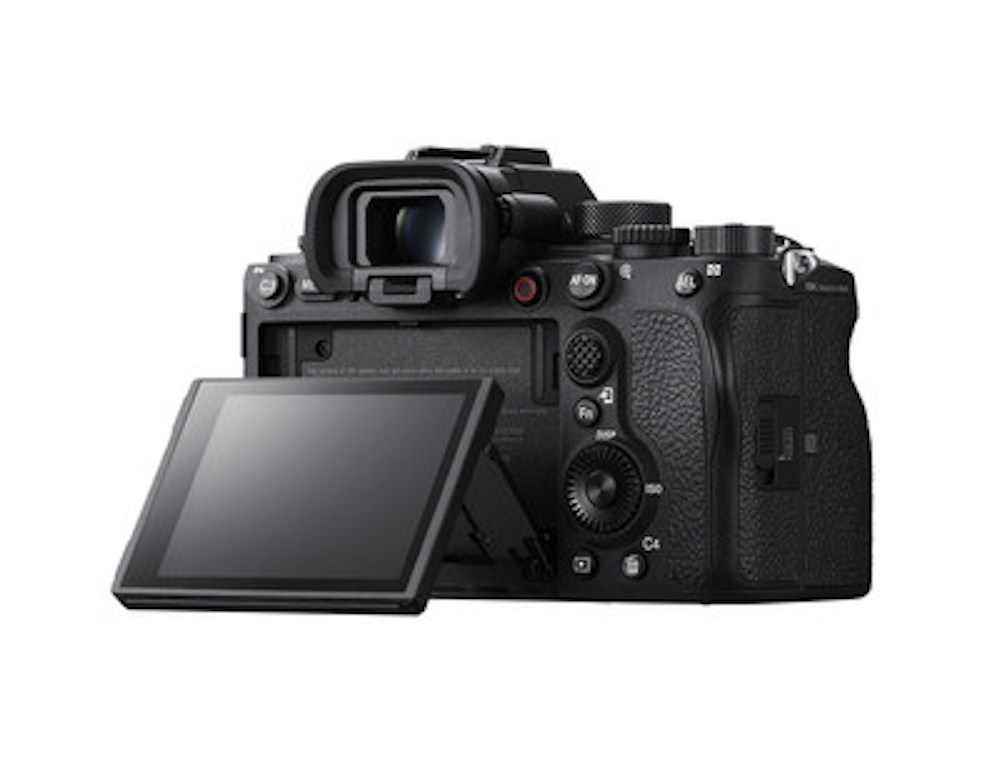
Sony has chosen to build a camera that is near state of the art in any discipline of photography – the A1 has the image quality of anything except medium format, and the speed of anything except the fastest dedicated sports cameras. Canon and Fujifilm have taken the opposite tack and released highly specialized cameras, each aimed at a specific type of photographer and subject. As well as the EOS-R3 is tailored to the needs of the sports photographer, the GFX 100S is tailored to the landscape and architectural photographer. Starting from a baseline 24 MP camera that is available from any major manufacturer for between $500 and $1000, the only thing that Canon and Fujifilm did in common was to improve the build quality. Both the GFX 100S and EOS-R3 feature impressive build and weather sealing, neither of which is common on $500 cameras. Beyond that, though, their approaches are exactly opposite. Sony has tried hard to split the difference, releasing a camera that can go from Fenway Park to the High Sierra.
It’s a 50 MP camera with, by all reports, a typically excellent Sony sensor. Unlike the R3, there ARE plenty of reports of A1 image quality (I hope to use one myself this winter), and the near-universal opinion is that it’s excellent. Like any modern Sony, autofocus is fast and confident – in the dark environment and brief trial, I couldn’t tell whether it was “better than other recent Sonys” or simply “excellent, as I would expect a Sony from the past few years to be”.
Sony calls it a 30 fps camera, although that comes at a cost. Unlike the Canon, the full uncompressed raw mode is not available at full speed. There are a bunch of inevitable restrictions – fast shutter speed (duh…), electronic shutter (no mechanical shutter can move that fast), continuous AF with release priority. There are also a couple of critical restrictions that are not immediately obvious, two of which could make 30 fps less useful – 30 fps is JPEG, HEIF (Apple’s iPhone image format, now supported by a few non-phone cameras and read natively by Macs) or lossy compressed raw only. The other restriction is that, while continuous AF has to be on, AF tracking has to be OFF. Reaching 30 fps requires certain newer Sony lenses (thankfully, most of the G-Masters and all of the long telephotos are on the list – although third-party lenses drop to 15 fps). Fortunately, most of these restrictions, other than electronic shutter only and third-party lenses, only drop the camera down to a still (very) impressive 20 fps. It may be better to think of the A1 as a 20 fps camera with very few restrictions and an occasionally useful 30 fps mode than as a true 30 fps camera. Of course, how often do you need a 30 fps still camera?
Other impressive speed statistics include a 1/400 second flash sync speed – the fastest ever, other than leaf-shutter lenses. Interestingly, the fastest flash sync speed requires the mechanical shutter, although the electronic shutter will still sync at 1/200 second (and shoot 18 fps with flash!). The A1 is capable of 8K30p and 4K120p video, as fast as anything on the market today (short of a RED).
Ergonomically, it’s a modern full-frame Sony (A9 variety), both the good and the bad of that. It’s a very compact body – much smaller than the EOS-R3 or the Z9, and slightly smaller than the GFX 100S. Controls are where Sony’s been putting them for a while now, starting with the original A9 and (to an extent) the A7R IV. The menu system is Sony’s excellent newer system that debuted on the A7S III, rather than their infuriating older system. Like the A9 and A9 II, it has stacked drive mode and AF mode dials on the left shoulder, in addition to the usual collection of control dials. There are a stunning total of SEVEN rotary controllers (front, top and rear programmable dials plus exposure compensation, mode, drive and AF mode). Has any camera ever had this many (not counting vertical grip duplicates)? In addition to the rotary controllers, there are the AF area joystick, touchscreen and by my count eleven buttons (including the shutter button, but not the various lock buttons or the lens release). It has an enormous number of highly customizable controls!
That’s an awful lot of controls to stack on such a compact body, and photographers with larger hands may find it more cramped than other cameras. Sony has made great strides in ergonomics, but to my tastes, they still make functional cameras, but not the most ergonomic on the market. They’ve come a long way from the original A7 series, but they haven’t been making cameras for as long as Canon, Nikon or Fujifilm and it sometimes still shows. On the other hand, the A1 is able to be amazingly compact and light for all they crammed in there, and it would be substantially larger if it were less cluttered. The battery is Sony’s familiar and excellent NP-FZ100, giving it good if not great battery life, and shares batteries and chargers with just about every recent Sony. Many photographers expected the A1 to be a dual-grip camera with a heavy-duty battery and tank-like build. Sony didn’t go that way, opting for a compact body that feels familiar to anyone who’s used a Sony since the A7 II, and especially the A9 series. By recycling essentially the same body, Sony makes all their cameras instantly familiar to Sony shooters, but they lose the ability to offer the perfect configuration for a given job. A compact dual-grip body like the EOS-R3 might have been more appropriate for the A1 in some ways, but it wouldn’t have been as instantly interchangeable with every other Sony on the market. Unless they have multiple A1s, the average A1 shooter will have either one or more A7 III (or now IV) bodies, an A7R IV or two, some A9 models, or a combination. All of them feel almost exactly the same -and they all use the same batteries, remotes and most other accessories. Even the video specialist A7S line is almost identical. No other manufacturer is so consistent, and no other manufacturer has a full-frame line this complete.
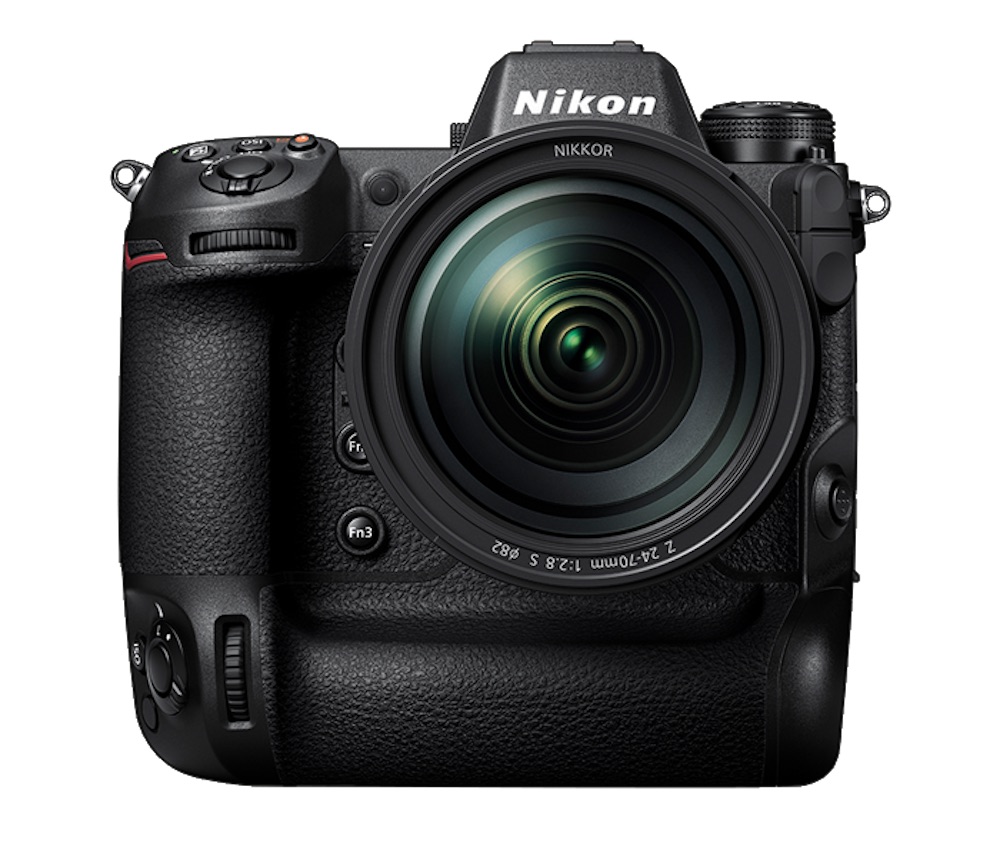
Nikon’s Z9 is the newest of the four flagships, and it is in some ways the most ambitious. Some articles call the Z9 “the first mirrorless camera to delete the mechanical shutter entirely”. That’s not quite true, because of the odd Sigma fp and fp L, and the extremely video-centric Panasonic BGH1. None of these earlier attempts are versatile still cameras – the BGH1 is really a more or less dedicated video camera (it’ll take stills, but so will a RED) and the two Sigmas are duck-billed platypuses that do things radically differently, but not always successfully (their 1/15 second flash sync is actually slower than a Pentax 67, for example!). The Nikon is the first mainstream mirrorless camera not to use a mechanical shutter at all. Both the Sony A1 and Canon EOS-R3 walk right up to the line, with fast electronic shutters that are required for many of their higher-speed features, and are versatile enough to be used for most images – but both retain a mechanical shutter. While many images of the Z9 without a lens appear to show a closed shutter, that’s actually just a sensor protector – there’s no mechanical shutter. The shutter readout is fast enough to nearly eliminate rolling shutter (unlike the Sigmas, which are best restricted to still subjects, but like the A1 and EOS-R3, which capture action very well with their e-shutters) and to provide a respectable, if not class-leading, 1/200 second flash sync speed.
Going beyond the “no mechanical shutter” headline, the Z9 offers a lot for the all- around pro or advanced photographer. It’s a big, chunky camera, closer in weight to a D6 (or an EOS 1Dx mk III) than to the surprisingly svelte EOS-R3. It uses Nikon’s EN-EL18 battery series that debuted on the D4, with the newest EN-EL18d (supplied with the Z9) allowing increased shots per charge and in-camera charging. The charger that comes with the Z9 will charge EN- EL18b,c and d variants, but not very old batteries. Conversely, old chargers won’t charge the new batteries fully, due to capacity differences. The battery provides an absolutely massive 36 watt-hours of power – more than twice the 12-16 watt-hours of a typical mid-sized camera battery like Nikon’s own EN-EL15 series, Fujifilm’s NP-W235, Canon’s LP-E6 or Sony’s NP-FZ100. The battery is actually more powerful than any iPad battery except the 12.9” iPad Pro, and almost the power of many ultralight laptop batteries.
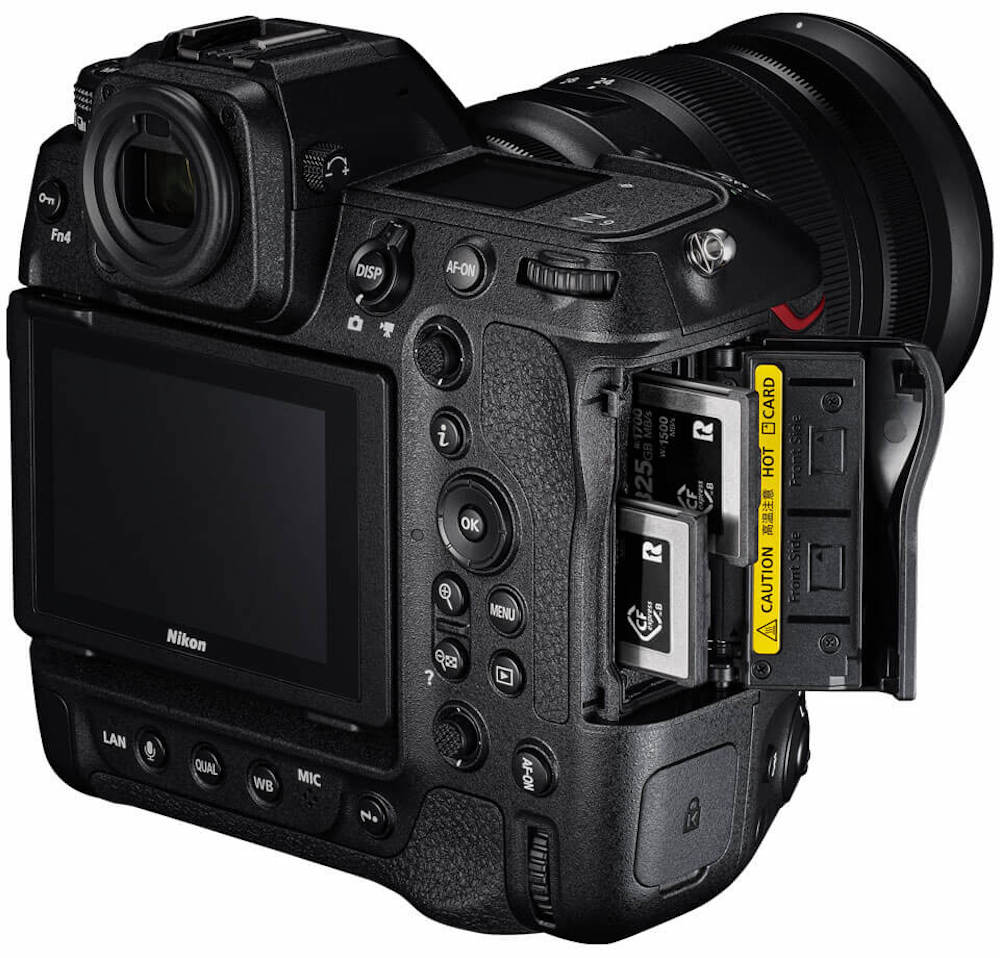
While the batteries are remarkably backwards-compatible, the memory cards are fully forward-looking. The only option is dual XQD/CFExpress slots, with no provision for SD. Nikon has been moving in this direction for quite a while – the D6 has exactly the same storage configuration, the original Z6 and Z7 are single-slot XQD/CFExpress cameras and even the D5 from 2016 is a dual XQD (only) camera, although a CompactFlash version was available as well. The D850, Z6 II, Z7 II and even the APS-C D500 are primarily XQD/CFExpress (Type B, which is the standard size) cameras, although they also have a secondary SDXC slot. Each of the four flagships uses a different memory card configuration (all are dual-slot). Canon uses an unmatched pair of slots – SDXC and CFExpress. Sony uses two dual purpose slots, with each taking either SDXC or the harder to find, low-capacity CFExpress Type A. The largest CFExpress Type A cards presently available are 160 GB, only Sony and ProGrade Digital make them, and they are almost twice as expensive as the standard Type B cards. Fujifilm is SDXC only, but they don’t need the speed as much, since their most serious competitors accept a single 8×10” film holder. I think Nikon has the best approach, with Fujifilm’s also being well suited to their particular camera. If Sony wins the bet on the odd CFExpress Type A cards, their approach could wind up being especially versatile – but Sony has a history of going their own way with memory card formats that are forever hard to find. The A1 runs the risk of being a mostly-SDXC camera with significant speed penalties compared to its CFExpress competitors if the smaller CFExpress Type A format doesn’t catch on. Canon’s dual heterogeneous slots make backup very tricky, because setting the slots to mirror each other reduces the camera to SDXC speed.
For such a big camera, the Z9 fits very well in the hand, but the weight is very noticeable (it’s only a little lighter than TWO Sony A1s). Like previous top pro Nikons, try not to run this camera into a rock – for fear of damaging the rock. A Nikon F2 once saved its owner’s life in Vietnam by taking a bullet through the motor drive (and the film was fine…). The Z9 appears to be cut from the same cloth. Nice and stable with big telephotos (which Nikon is FINALLY getting around to making in Z-mount), but not as easy to run around with all day as some cameras.
The ergonomics are close to perfect – everything is exactly where a Nikon shooter would expect to find it – in a manner that splits the difference between a Z7 II and a D6, and will satisfy the photographer coming from either one. Nikon is especially proud of the electronic viewfinder, which, despite its lower resolution, is one of the best on the market. By using a 3.7 million dot viewfinder, Nikon can run it at full speed and full resolution all the time, with no viewfinder blackout at all. Sony’s 9.44 million dot viewfinder only uses its full resolution in playback, and has slight blackouts during high-speed shooting. All four viewfinders are impressive, but Nikon’s may be the most like an optical viewfinder (with the added advantage of no blackout) of the four.
I haven’t had a card in any of the three full-frame bodies, but Nikon has one feature that has historically helped lift their low-ISO image quality above the field – ISO 64. The 2/3 stop difference from either Canon’s or Sony’s lowest non-extended ISO has generally eliminated any trace of noise at any practical print size and added 2/3 stop of dynamic range. Sonys typically lose, rather than gain a bit of dynamic range when they use their extended ISOs below 100 (although they do become effectively noiseless). Fujifilm has an ISO 50 setting on the GFX line that is technically an extended ISO, but doesn’t lose (or gain) any dynamic range and eliminates any trace of noise. If I had to GUESS, the Z9 will lead the A1 slightly in low-ISO image quality, due to ISO 64. They will probably be similar at ISO 100 (although with different colors that are to individual taste) , but the Nikon will very likely have an ace in the hole by dipping the ISO.
Nikon, Canon and Sony could well continue to iterate a higher-resolution body just below the flagship – Z7 II, A7r IV, EOS-R5 and what Nikon has done for years with the D800 series. As long as the flagship stays competitive in resolution, the next body down being even higher resolution (at a performance cost) isn’t a problem. 45-50 MP is very competitive for an expensive camera, while 24 MP is more of a niche choice at that price. Until recently, the big sports cameras were inherently lower resolution, but the A1 and now the Z9 changed that.
Fujifilm is in a bit of an odd position if they want to make a fast stablemate for the GFX 100S. Their high-end cameras are medium format, which is an unlikely choice for a super-fast body since super-fast medium format sensors simply don’t exist at this point, not to mention that they don’t have long, fast lenses for the GFX system , and they’d be hard to make, with limited sales potential. Fujifilm is extremely unlikely (it’s not going to happen) to release a full- frame line just for a sports body. I suppose they could release a high-end, super-fast APS-C body and claim it as a co-flagship with the GFX 100 and 100S – but, if 24 MP raises some questions, what would happen to a $5000+ APS-C body? Nobody (with the usual exception of Leica) has tried anything APS-C much over $2000 since the Nikon D2x. It would almost certainly have to use a unique sensor, and I’m at all not sure such a sensor is worth the development cost.
What I think is far more likely from Fujifilm is an APS-C camera above the X-T4, using a new (but not unique) sensor that soon spreads through their line (and perhaps to Sony and/or Nikon as well). It would be something like a $2500 body that offered a lot (but not quite all) of the performance of a $6000 camera. It would leave the pro sports market to Canon, Nikon and Sony, but be very fast for general photojournalism and even high school and college sports. This is the old E-M1 niche, and OM Digital (the Company Once Known as Olympus) would obviously like to keep it, but Fujifilm is well positioned with lenses at least as good and much better sensors.
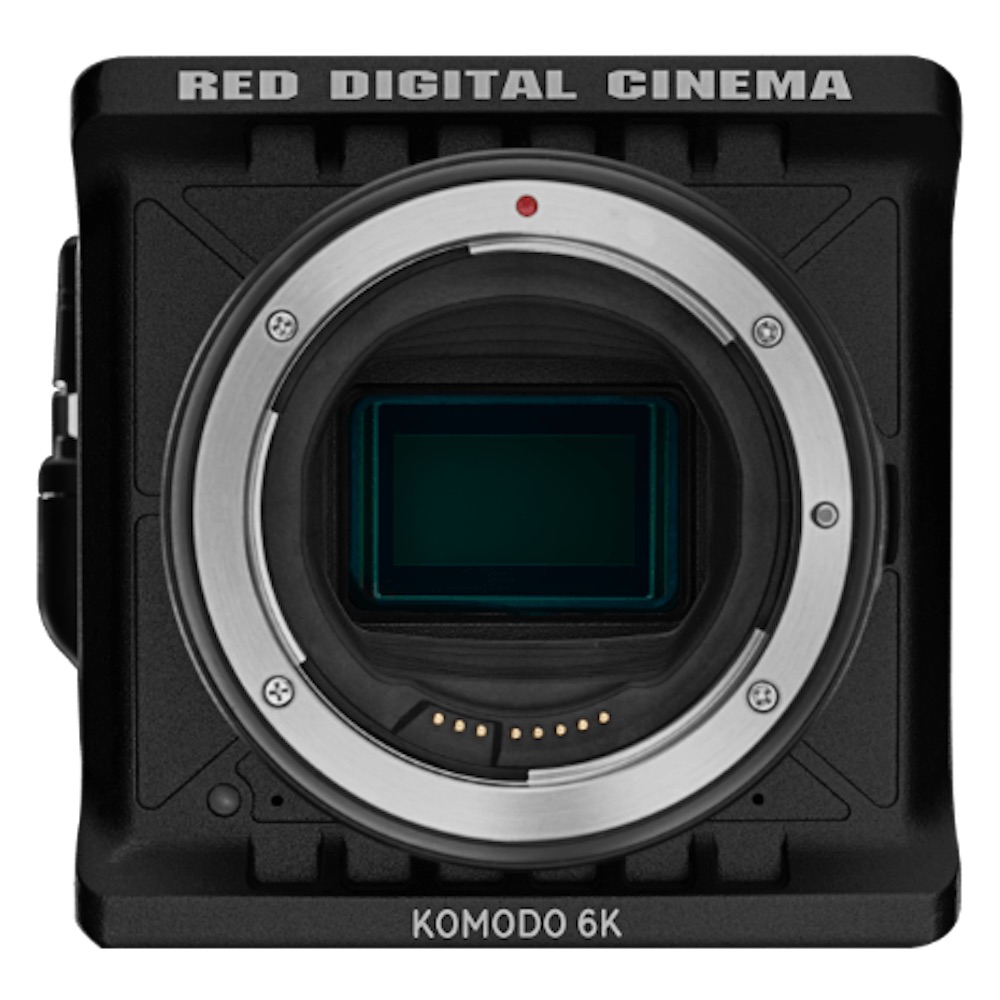
The EOS-R3 actually overlaps more in its intended market with something like a RED Komodo than it does with the GFX 100S at the other extreme of high-end still camera design. Some users are beginning to pull stills from raw video from a good enough source (and a Komodo will shoot 6K raw at up to 40 fps). The Komodo is quite similar in resolution to an EOS- R3 (its frame is a few hundred pixels wider, and about 20% less tall, since it uses a cinema aspect ratio). It’s exactly the same price and very close in weight (although a Komodo will require more accessories for a given shooting situation than an EOS-R3, driving up both price and weight somewhat). The Canon almost certainly has much better autofocus, while the Komodo has many more video modes.
Both Canon and RED have built true hybrid still/video cameras, coming at it from opposite directions. RED built a video camera that can pull stills out in a useful raw format without much compromise. They’ve had such cameras for years, but the Komodo is the first one that is priced like an (expensive) still camera, and it’s a lot closer to a still camera in bulk, too. Canon built a still camera with the speed of a video camera and a ton of video flexibility. There are an awful lot of shoots where either would work well, and what really matters is which one a given imagemaker prefers. Wouldn’t THAT be a fun shootout? It would require having access to both at once and my friend Micah the cinematographer to help! Printing from a RED?!?!
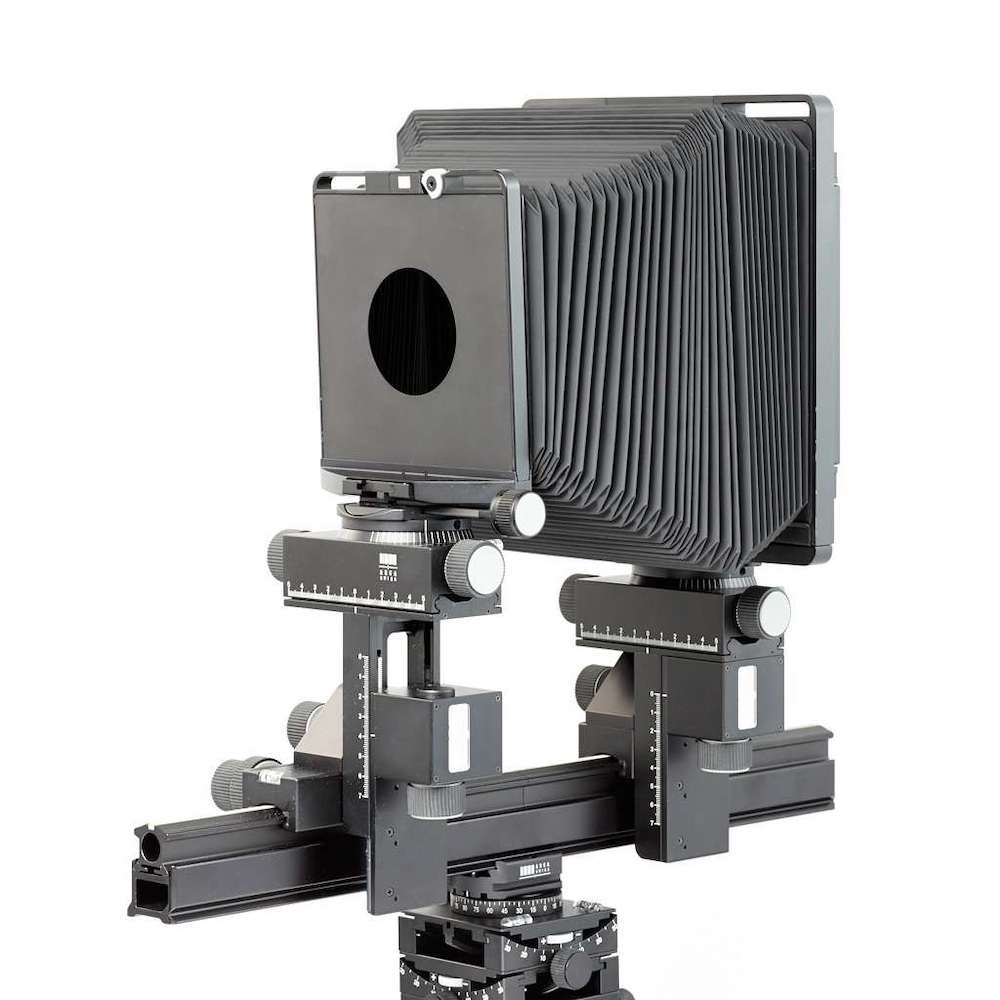
Conversely, the GFX 100S overlaps more in market with an Arca or Canham view camera than it does with the EOS-R3. Most ideal shots for the GFX are what was previously view camera territory. It’s an ideal camera for landscape, architecture and the more contemplative sorts of portraiture. Exactly the areas the view camera has long dominated. Of course, it’s also good at traditional medium format film and digital territory, offering a substantial quality bump against most predecessors. It will give a better account of itself shooting sports than any view camera will, but I’d still rather have a $1000 Fujifilm X-S10 (or a Sony A6600, a Nikon Z50 or a decent Canon Rebel) than a GFX 100S at the ballpark.
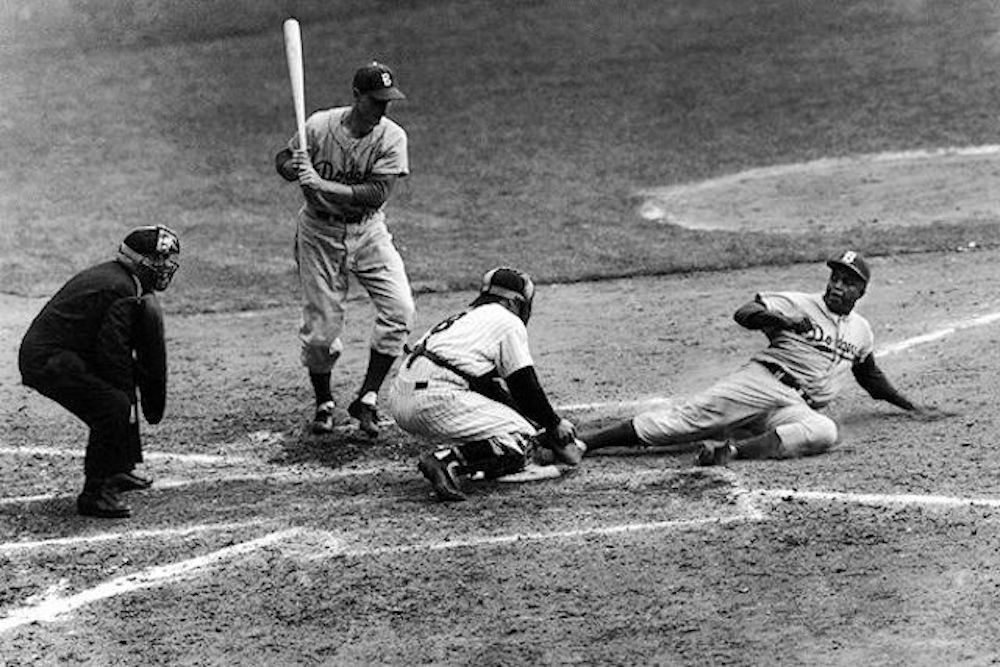
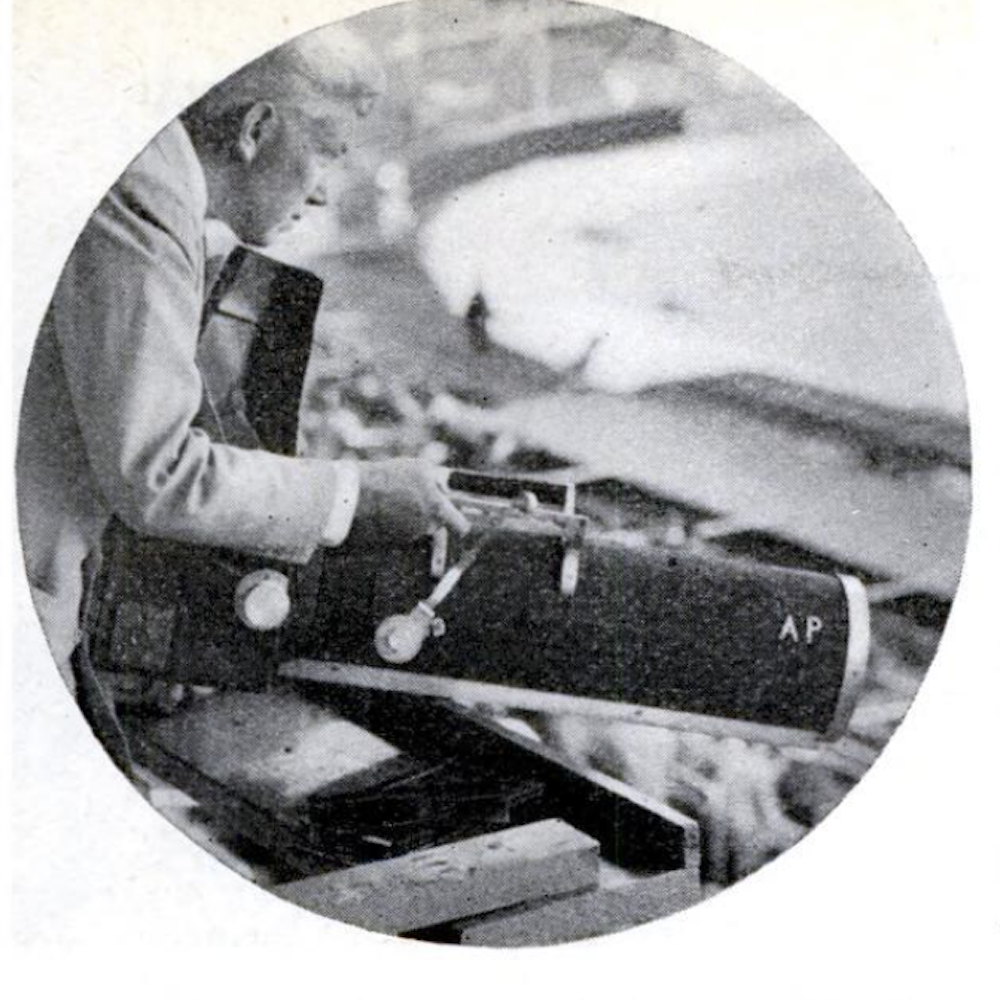
Amazingly, in Jackie Robinson’s day, photographers shot baseball with large-format film and got the shot more often than you’d expect! John Rooney’s iconic image of Jackie Robinson stealing home in the 1955 World Series was probably taken with a “Big Bertha” – a 5×7” Graflex SLR with a sloooow telephoto lens. I found the way the World Series was photographed in the 1950s described in a 1952 issue of Popular Science, but it probably hadn’t changed much by 1955 (the Nikon F didn’t come along until 1959). No AF, no light meter, no image stabilization and one shot per load. Fortunately, 5×7” covers quite a bit of focus error or subject movement and medium-speed black and white film has a lot of exposure latitude! Still, it took a heck of a lot of skill!!! All told, I’d rather shoot a ballgame with a GFX 100S… Today’s tools are so good that even a laughably wrong one for the job (GFX 100S for sports, EOS-R3 for landscape) will get quite a few keepers, and there are cameras that handle both extremes remarkably well (A1, Z9 (probably), X-T4, etc.).
Nikon and Sony are trying to run down the middle between Canon’s and Fujifilm’s extremes. Both the A1 and the Z9 are largely speed-oriented cameras, but they also offer resolution comparable to anything except the A7r IV and medium format. Three of the four flagships (all except Fujifilm) are primarily electronic-shutter cameras, right on the cutting edge of what’s possible today. The GFX 100S is a much slower camera – but it’s a VERY fast 8×10” camera! Whichever brand you use, there’s been a breakthrough this year – it may or may not match your particular style (although, if you chose Fujifilm GFX looking for speed a few years ago, it was a quixotic choice – the GFX 100S should appeal to the vast majority of GFX photographers, and by the amount of trouble dealers have had keeping them in stock, it does).
I’m glad to see these four cameras showing this much differentiation. There is certainly not a one size fits all at the top of the market, among the cameras most protected from phone competition. Even among the two most similar cameras, the ergonomic approaches are entirely opposite – from a compact body that handles like any other Sony to a camera nearly the size of a D6 with traditional Nikon pro handling. Fortunately, most Nikon shooters are likely to prefer the Z9 (although they may not be happy with the Z system’s sparse but improving selection of longer lenses), and many Sony shooters will prefer the A1. Both bodies follow what their manufacturer has been signaling for years.
The two notable weaknesses in this group are that Nikon still has to get telephoto lenses out there (their lineup below 200mm is excellent and increasingly complete) and that Canon’s resolution is going to be divisive. The Z9 is exactly the body that top-end Nikon shooters have been waiting for, and a majority of them are going to be coming from the D5 or D6 and want the dual grip (D850 shooters have the Z7 II as another option, and may well get an ultra-high resolution body relatively soon). The extant 100-400mm and promised 400mm f2.8 are a great start, but Nikon needs to get the other 400mm (PF? – it looks small enough that it almost has to be), 600mm f4, 200-600mm and the 800mm (PF?) out there ASAP. Sony already has the 200- 600mm and the 600mm on the market (in addition to equivalents to the two announced Nikkors and a compact 70-300mm), and Canon has a 100-500mm that mostly covers both the 100-400mm and 200-600mm slots plus the 400mm and 600mm (although the latter two are “permanent adapter” lenses, while Nikon promises new designs). The PF lenses would provide Nikon with something unique in the long category.
Canon is going to make sports photographers very happy, while everyone else has the EOS-R5. The new features and body design on the EOS-R3 come with a resolution that is aimed at a specific market, and that’s going to disappoint a lot of wedding/event and wildlife photographers. The EOS-R5 is, by every account, an exceptionally capable camera – but wildlife photographers in particular are going to covet the relatively light dual-grip body and the eye- control focus of the EOS-R3, but won’t accept 24 MP. They need to get an EOS R3s or an EOS-R1 out there ASAP, sharing the EOS-R3 body, but with a different, higher resolution sensor. It won’t offer 30 fps with no compromises (24 MP was the necessary compromise to do that), but either a ~20 fps, 50 MP camera or a ~12 fps, 80 MP camera will fill a different need.
Both Fujifilm and Sony delivered more than their users could have hoped for. Nobody expected the GFX 100S to be as close in capability to the bulky original GFX 100 as it is (the tilt viewfinder and vertical grip are really the only losses), nor to knock $4000 off the price. Most observers were pleasantly surprised by how compact the 100S/50SII body is, especially with the superb image stabilization. Any expectation of a GFX much faster than the 100S is probably misguided – medium format has always been a niche, and speed has always been the price to be paid for quality. The quality of GFX 100S images continues to amaze me – I just haven’t seen files that look like this before. Part of that is the 102 MP image sensor, of course, but the other part is Fujifilm’s lenses and their color science. Their recent lens announcements and pre- announcements show that they understand the unique place of the GFX system in the market.
Sony crammed an incredible amount into the little A1 body. They’ve been signaling for years that they’re going to stick to one basic body design and one battery, with continued refinements. The A1 is a great refinement of that strategy, and the camera Sony watchers should have been looking for. They’re beginning to update their earlier lenses that aren’t up to their latest work, having released an essentially complete lens line missing only a few exotics (cough… 300mm f2.8). There really isn’t a “missing” Sony FE body at this point, and very few missing lenses.
There’s one more article coming in this series of PhotoPlus season roundups – covering cameras below the flagship end of the market. The Sony A7 IV is, of course, the star of that particular show – it may be one of the most important new cameras we’ve seen in years because it is the first to feature the new mainstream Sony full-frame sensor (which, if history is any guide, may be with us for quite a while). Fujifilm’s GFX 50SII and a couple of minor updates, Nikon’s Z Fc and the two Micro 4/3 no-shows are also worth reporting on.
Dan Wells
November 2021
You May Also Enjoy...
Hand’s On: new Sony A9III and Sony 50mm G Master, Sony 85mm G Master, Sony 75-350mm APS lenses
A quick hands on look at Sony A9iii and the Sony APS 75-350mm len
The best wide-angle zoom in the world? The Fujinon G5 20-35mm f4 R WR reviewed.
FUJIFILM GF 20-35mm f/4 R WR L
